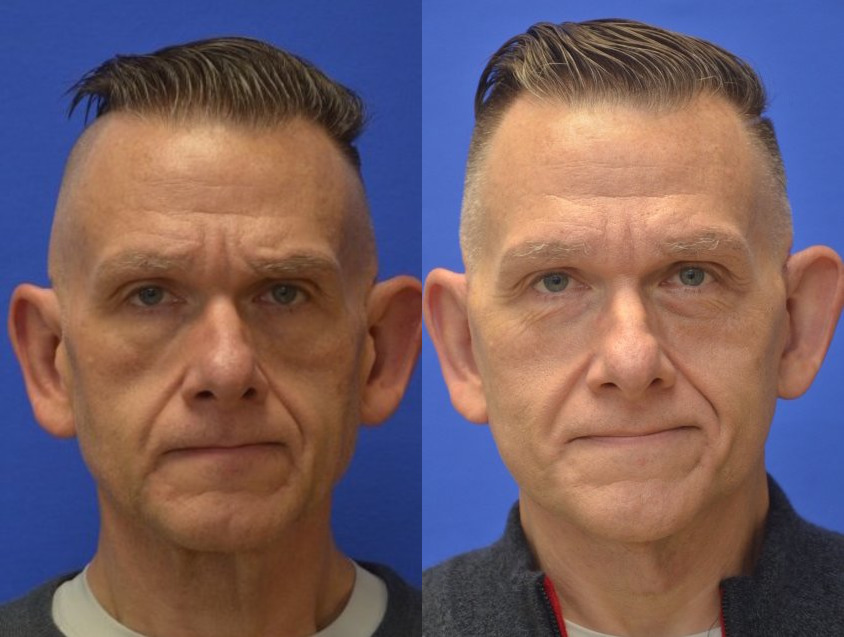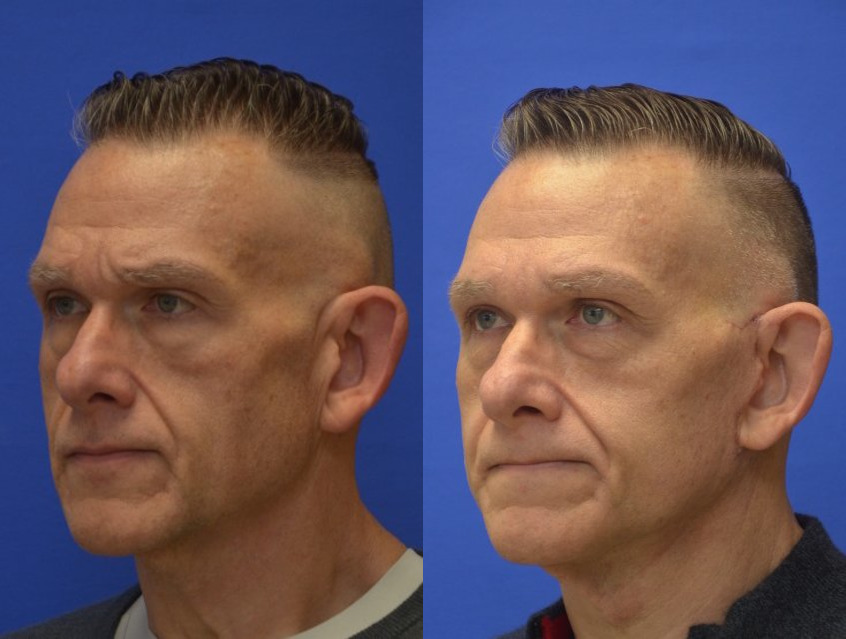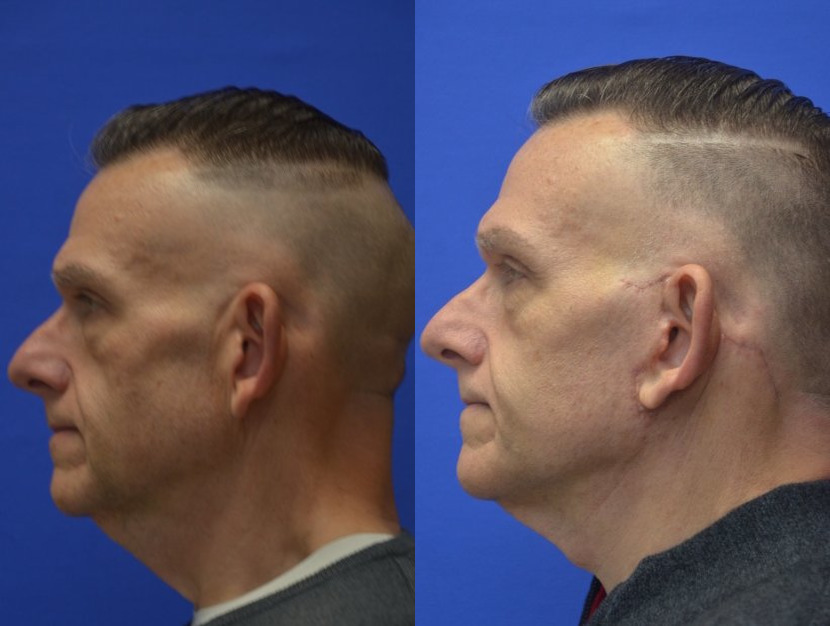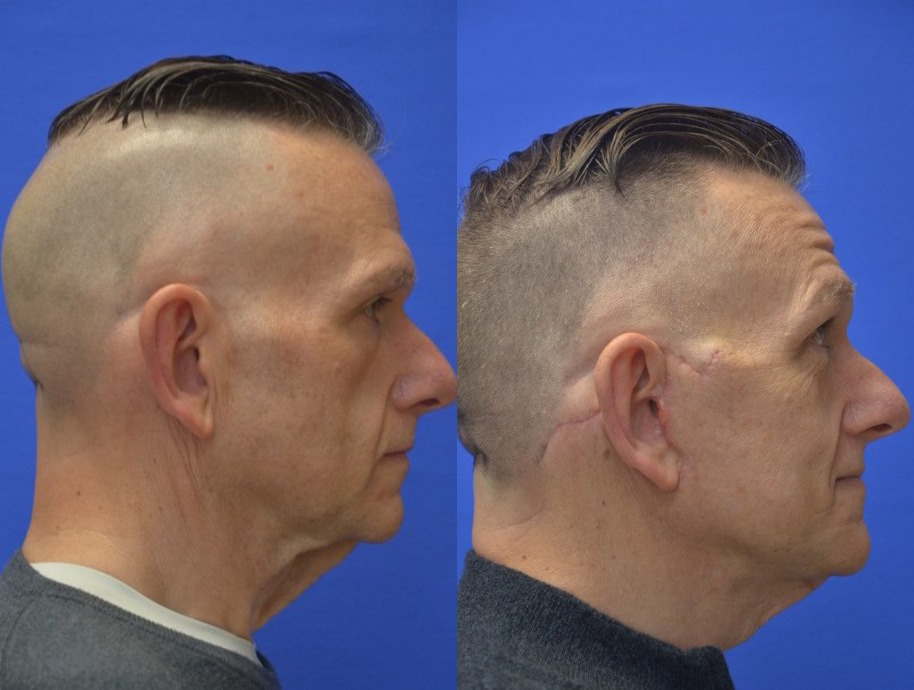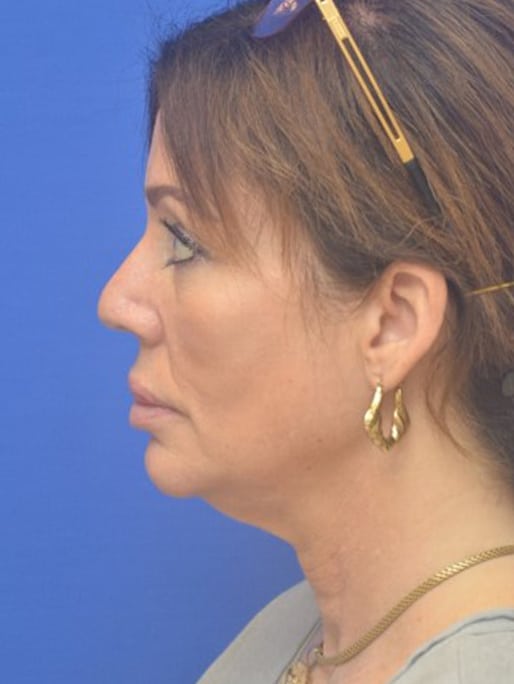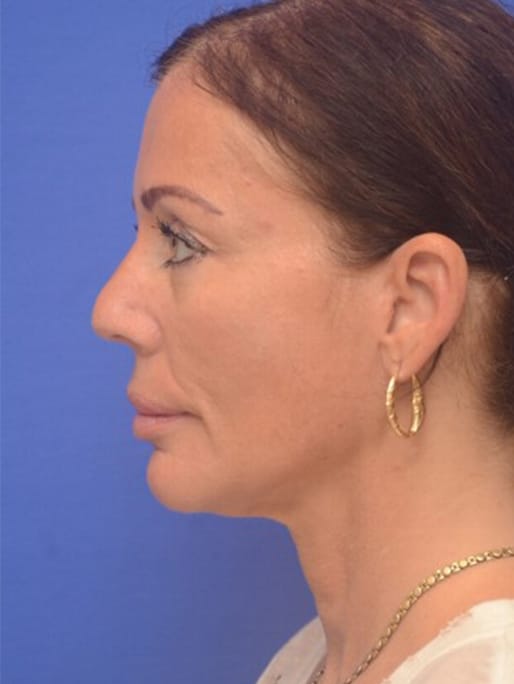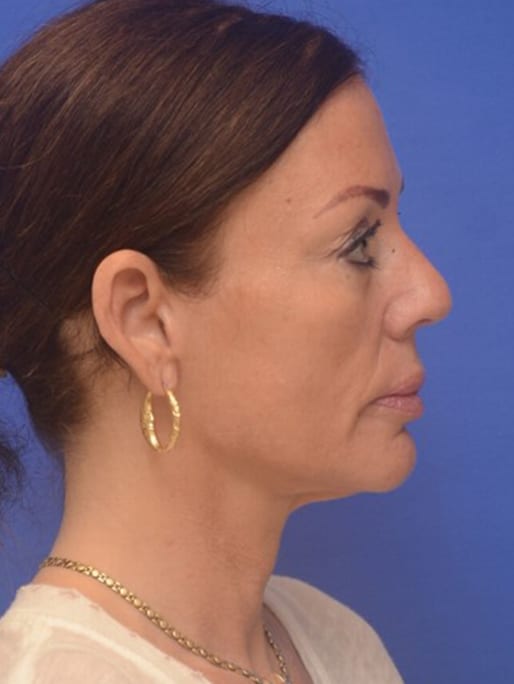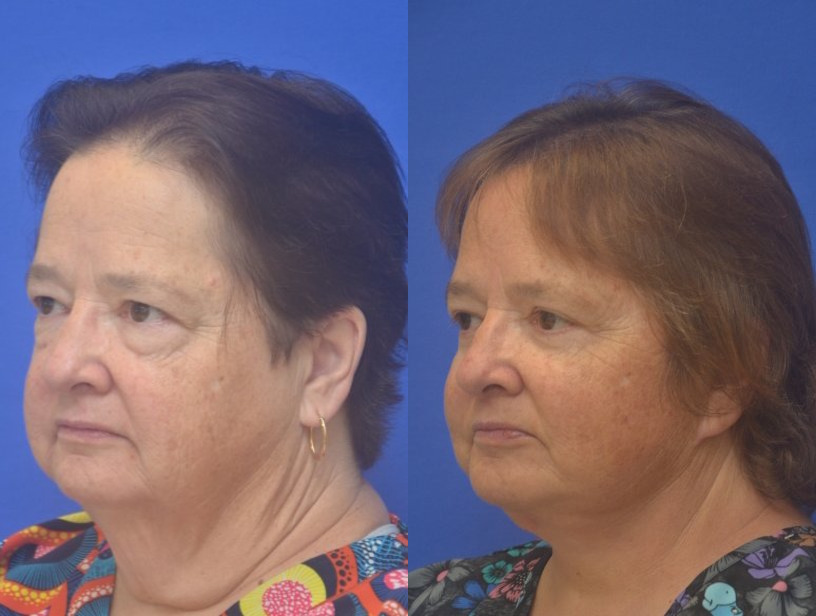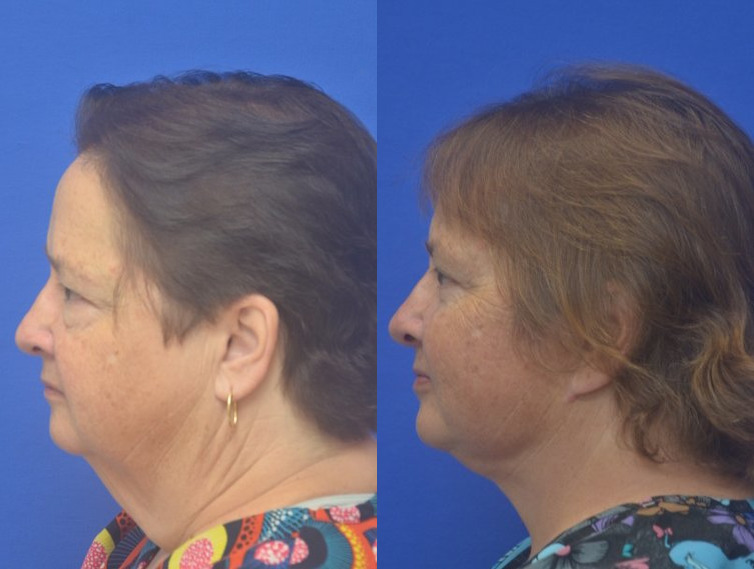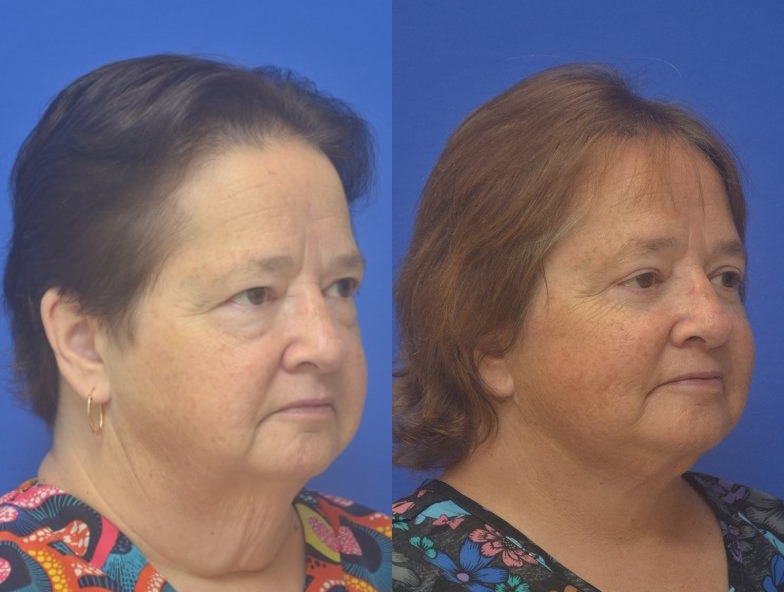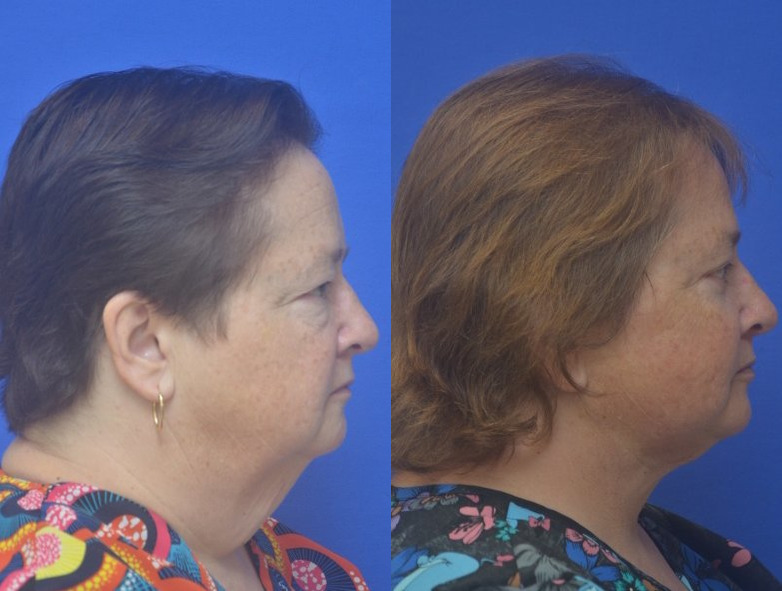Facelift
Pull Back the Years of Aging and Reveal a Younger You
Some say that aging has caused them to have a harsh, mournful and tired look that doesn’t match the way they feel inside. Others have specific complaints about being “too jowly,” having a loosely hanging “turkey neck,” or sagging cheeks. With a facelift, patients can achieve a much younger, more rejuvenated appearance.
What is a Facelift?
The facelift is a surgical procedure, used to address volume loss and sagging in the mid-lower face caused by the aging process. By tightening the tissue in this area and removing excess skin, patients can achieve a more youthful appearance with better-defined cheek bones with smoothed wrinkles.
Patient Results
View GalleryWho Chooses the Procedure?
Although once sought mainly by older women, facelifts now are sought by an increasing number of men. Today, men constitute about 9 percent of all facelift patients. Many seek the procedure with the hope that their new, refreshed look will give them a competitive edge in the workplace. Many younger patients seek the procedure in order to maintain their young appearance. They know it is easier to stay looking young than to try to reverse the signs of aging later. Many older patients, including those in their late 70’s and 80’s, also seek facelifts and have achieved excellent results.
Customizing Your Procedure
Patients should keep in mind that facelifts are highly individualized and the experience others had may differ dramatically from what they experience. Whether they seek a “mini facelift” or a full-fledged facelift combined with a forehead/brow lift, rhinoplasty or eyelid surgery, today’s patients can benefit from the vast improvements that have been made in the facelift procedure over the past decade. Dr. Berman will help patients choose the techniques that are best from their concerns.
How is the Facelift Performed?
Plastic surgeons have learned that the key to a successful, long-lasting facelift lies deep beneath the skin in the layers of muscular tissue. Your plastic surgeon will pay particular attention to the SMAS (Superficial Muscular Aponeurotic System), the muscular membrane that supports the facial skin, and to the platysma, which is the thin sheet of muscle that extends from your collarbone up the neck to your lower lip. During the facelift, these membranous layers of muscle will be lifted and tightened. The overlying facial skin is then re-draped over this new smoother “base,” the skin is tightened, trimmed and the incision closed.
One of Dr. Berman’s goals is to ensure that the resulting scars are as inconspicuous as possible. Most will be hidden by your hair or concealed by natural facial contours. Dr. Berman may choose to hide part of the incision just inside the tragus, the fleshly protrusion of cartilage that guards the ear opening, rather than making the cut in front of the ear.
What to Expect During Recovery
After the facelift procedure, patients will have some required downtime and recovery. 1-2 weeks of rest at home can be expected and patients should arrange for this time off work. Some swellings, bruising, and discomfort can be expected during this time. Discomfort can be managed with pain medication prescribed by Dr. Berman and the use of an ice pack.
After two weeks, patients should start to feel better and more presentable. While a normal routine and work can be resumed, strenuous activity and exercise should be avoided for several more weeks. Dr. Berman will provide specific activity restrictions and aftercare instructions that should be followed closely to ensure a successful recovery process.
Your Facelift Results
After a facelift procedure, patients report looking many years younger. The results are significant, but still natural-looking so it will not be obvious that work was done. Some swelling can linger for several months after the procedure process, so it is important to be patient with the healing process. The results of a surgical facelift are long-lasting and will age naturally along with the rest of the body.
Frequently Asked Questions about Facelifts
How do I prepare for a facelift?
How do you reduce swelling after a facelift?
How do you take care of your face after a facelift?
How long after a facelift can I exercise?
How long does facelift last?
How long is recovery from a facelift?
How many times can you get a facelift?
How painful is a facelift?
Is a facelift permanent?
What can I expect from a facelift?
What is the difference between a deep plane and SMAS facelift?
When should you get a facelift?
Your Consultation in Boca Raton
To learn more about the facelift procedure and to start customizing your treatment plan, contact our office. We can schedule your consultation with Dr. Berman so you can be on your way to a younger you.
Dr. Jonathan Ross Berman is a Boca Raton plastic surgeon who has been certified by both the American Board of Plastic Surgery and the American Board of Otolaryngology / Head and Neck Surgery with over 30 years of service experience specializing in Breast Augmentation, Rhinoplasty, Face Lift, Liposuction, and many other types of plastic surgery in Boca Raton, FL.









